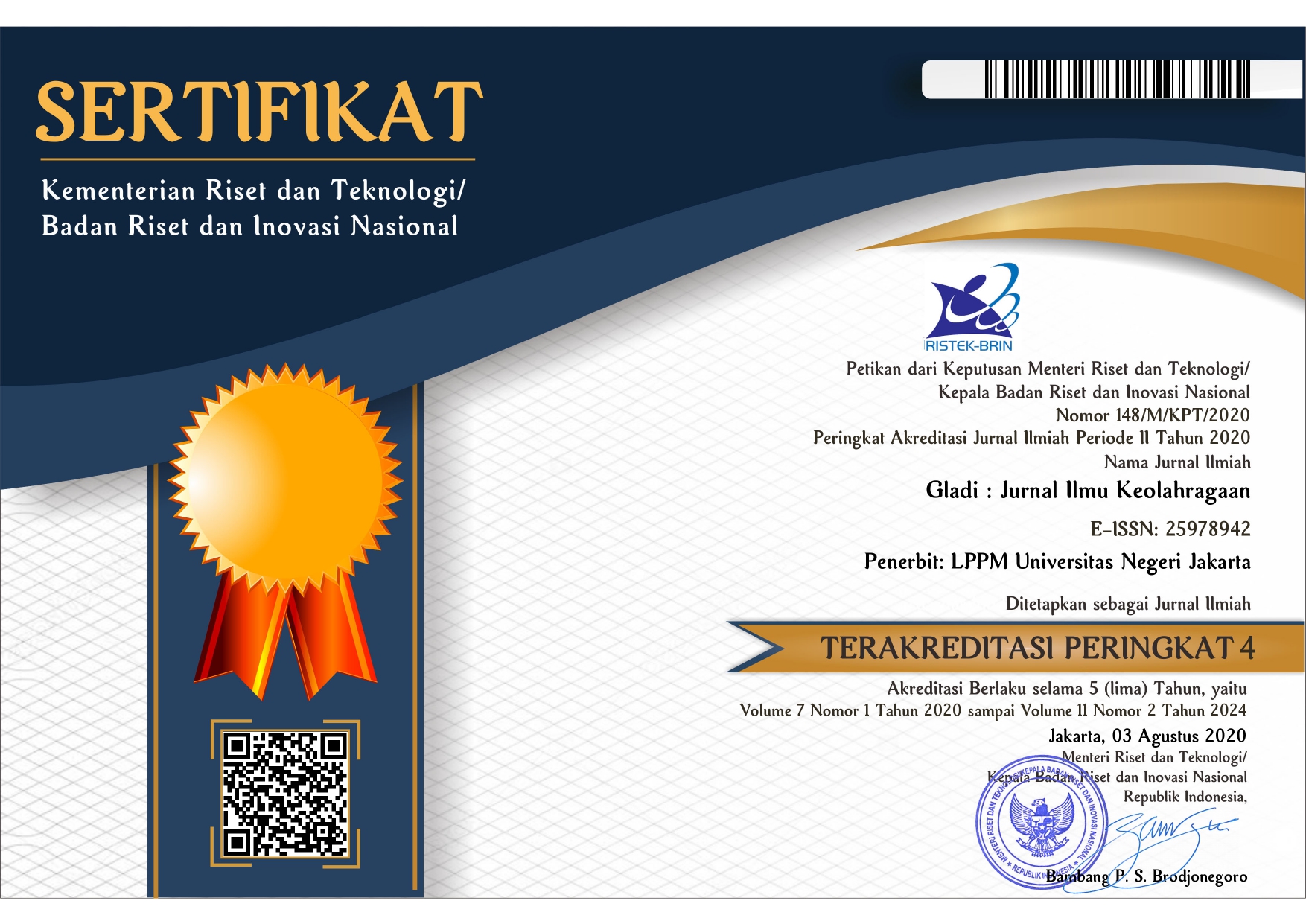Analysis of Anxiety Factors in Petanque UNJ Athletes in Facing the Match
DOI:
https://doi.org/10.21009/GJIK.143.02Keywords:
anxiety athlete; petanque; match resultsAbstract
The psychological state of the athlete must be the main thing before the athlete participates in a match or championship. A strong mental condition will give you optimism and courage, while a weak mental condition will make you pessimistic and afraid. This study aims to analyze the anxiety factors of UNJ petanque athletes in facing competitions. This research uses qualitative research methods with a descriptive analysis approach. Data collection in this research includes observation, interviews, and document analysis. The sample used was 18 petanque athletes. The research results of the athlete's anxiety variable have an average value of 48, the highest value is 67 and the lowest value is 26, standard deviation is 11.5, variance is 131.4, mode is 40, median is 48. The anxiety level of UNJ petanque athletes is quite high. The factors that cause anxiety among athletes also vary, such as fear of failure, fear of missing out on points, fear of stronger opponents and so on. Anxiety levels that cannot be controlled will make it difficult for athletes because it will have an impact on the athlete's body and mind so that it is not uncommon for athletes to experience many obstacles when competing.
Downloads
References
Anggia, O. (2019). Survei Efektivitas Latihan Pada Ekstrakurikuler Sepak Bola Di Smp Negeri 4 Dedai. Jurnal Ilmu Keolahragaan, 2(1), 1. https://doi.org/10.26418/jilo.v2i1.32625
Arifin, R., & Warni, H. (2019). Model Latihan Kelincahan Sepakbola. Multilateral Jurnal Pendidikan Jasmani Dan Olahraga, 17(2), 63–66. https://doi.org/10.20527/multilateral.v17i2.5702
Batubara, J. R. (2016). Adolescent Development (Perkembangan Remaja). Sari Pediatri. https://doi.org/10.14238/sp12.1.2010.21-9
Benny Badaru. (2016). Latihan Taktik BEYB.
Budiman, I. A. (2016). Development model of volleyball spike training. International Journal of Physical Education, Sports and Health, 3(3), 466–471. https://doi.org/https://doi.org/10.13140/RG.2.2.13429.88803/1
Curtis, A. C. (2015). Defining adolescence. Journal of Adolescent and Family Health, 7(2). https://doi.org/https://doi.org/http://scholar.utc.edu/jafh/vol7/iss2/2
Darojat, F. (2019). Pengaruh Latihan Speed Ladder Terhadap Peningkatan Kelincahan Pada Peserta Ekstrakurikuler Tenis Meja. Indonesia Performance Journal, (1)(1), 33–38. http://journal2.um.ac.id/index.php/jko
Diananda, A. (2019). Psikologi Remaja Dan Permasalahannya. Journal ISTIGHNA. https://doi.org/10.33853/istighna.v1i1.20







